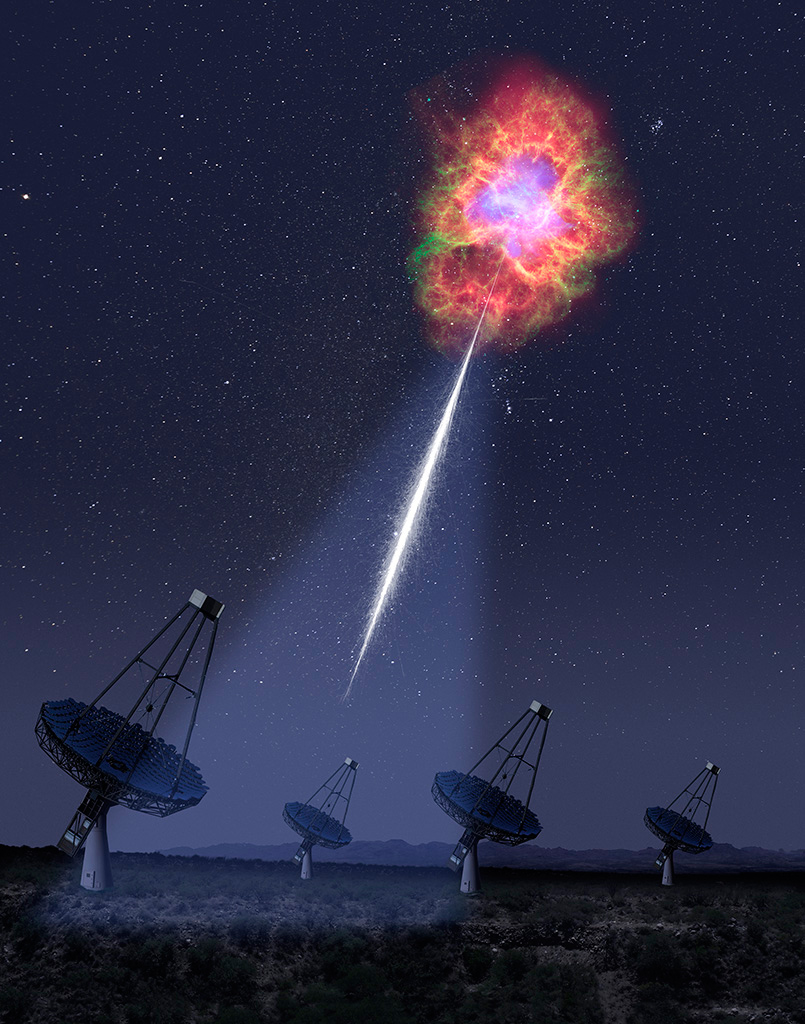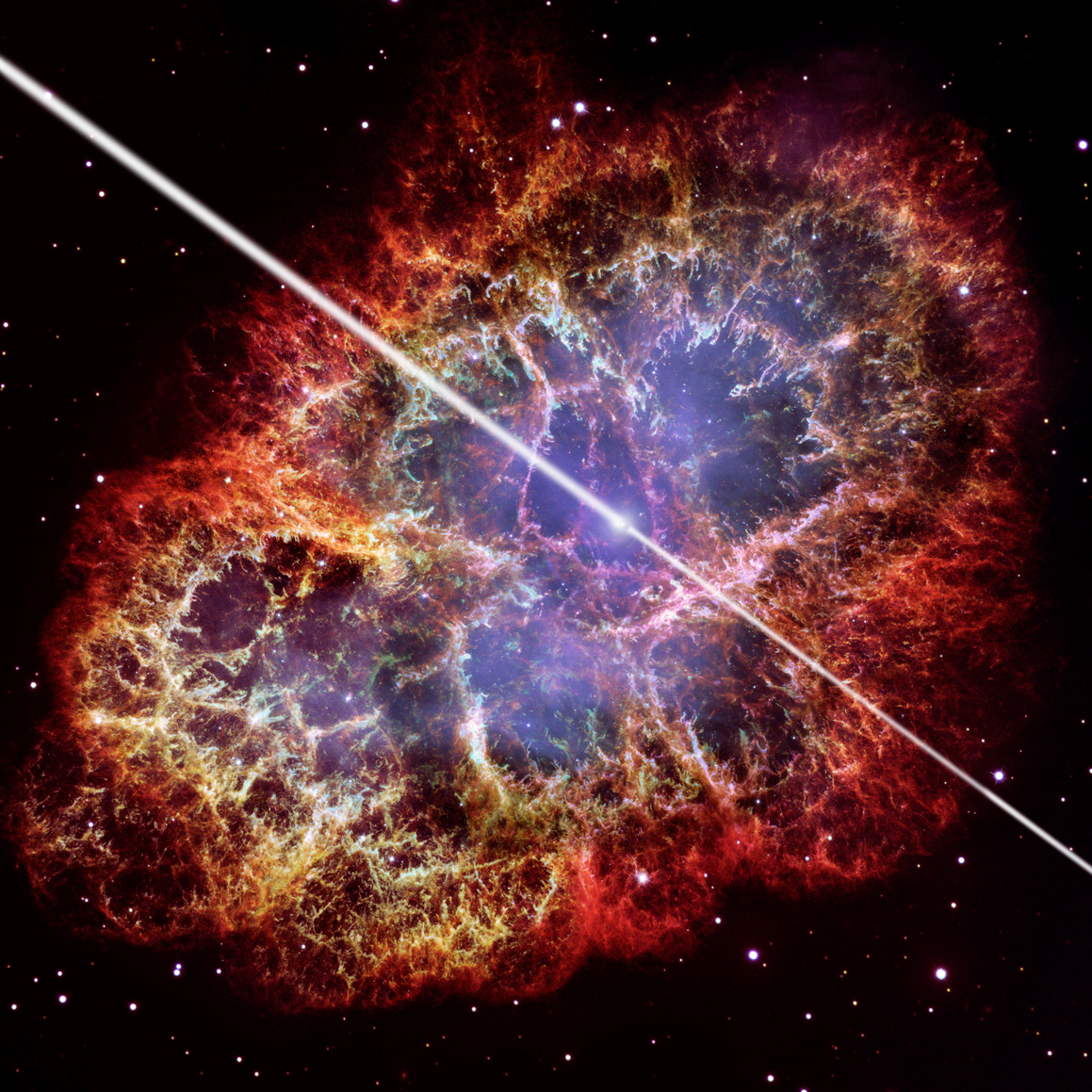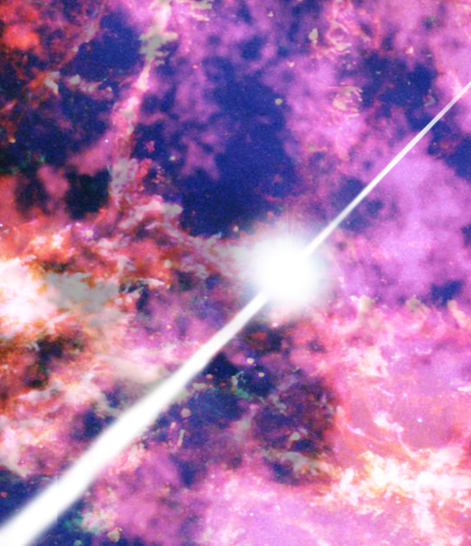Image List
-

An artist’s rendering of the VERITAS array detecting gamma-ray pulses from the Crab Nebula.
José Francisco Salgado based on images by M. SubbaRao, S. Criswell, B. Humensky, and J.F. Salgado -

An artist's conception of the pulsar at the center of the Crab Nebula, with a Hubble Space Telescope photo of the nebula in the background. Researchers using the Veritas telescope array have discovered pulses of high-energy gamma rays coming from this object.
David A. Aguilar / NASA / ESA -

This artist's conception shows the Crab Nebula pulsar, which astronomers discovered to be sending out pulses of gamma rays with energies exceeding 100 billion electron-volts (100 GeV). A pulsar is a spinning neutron star - the collapsed core of a massive star that exploded as a supernova.
David A. Aguilar (CfA)